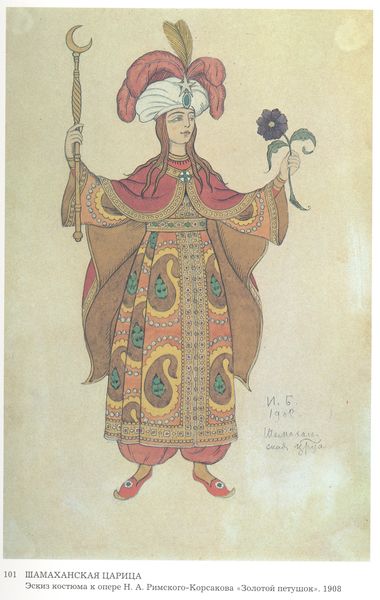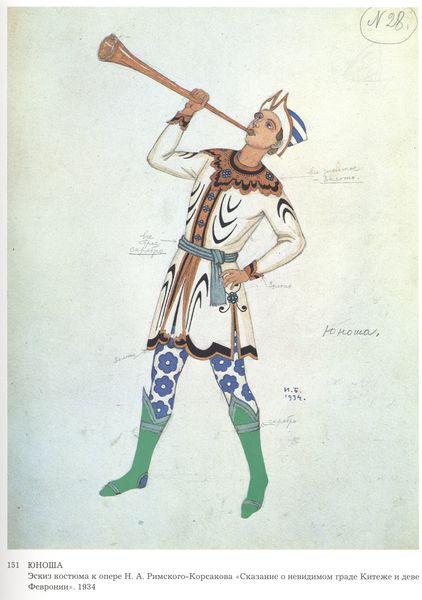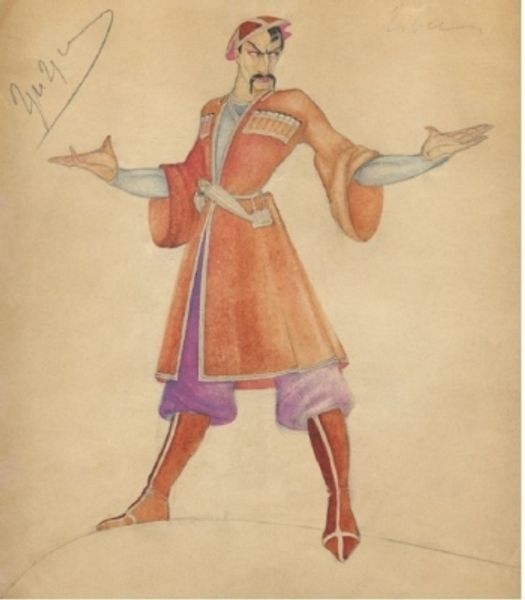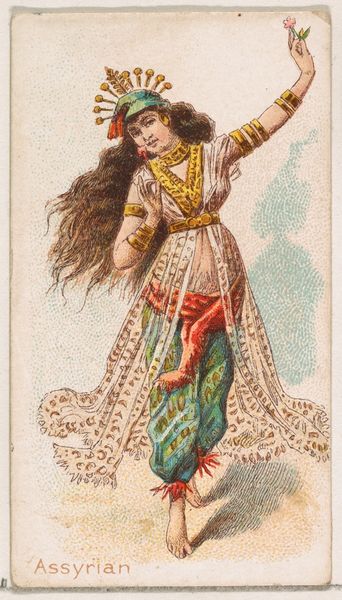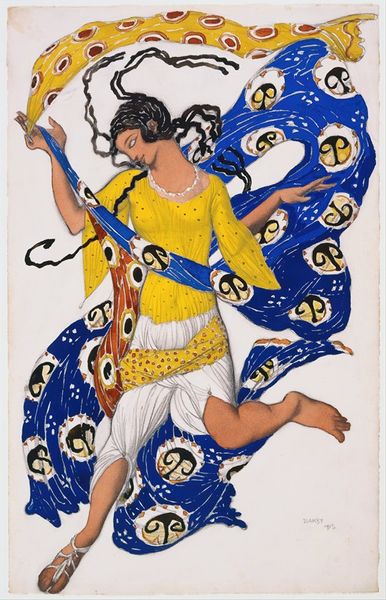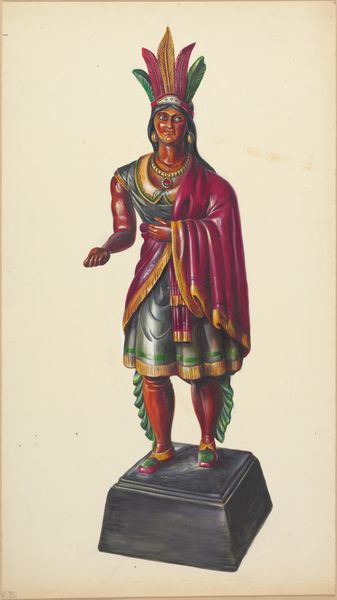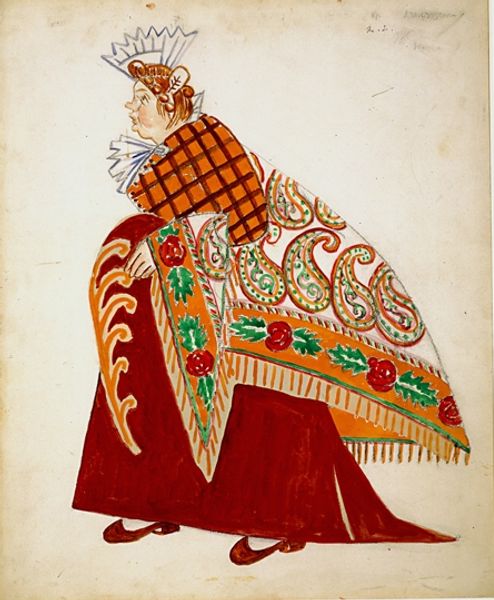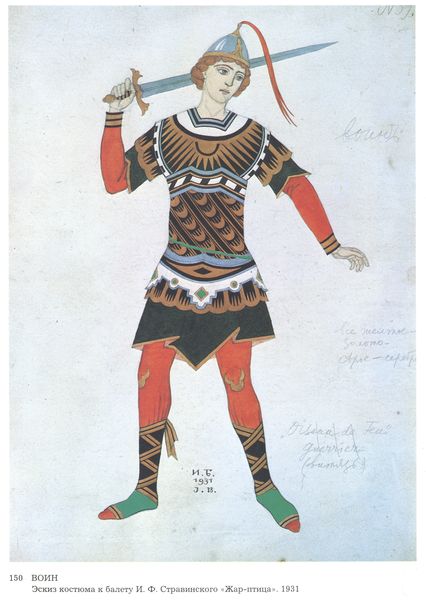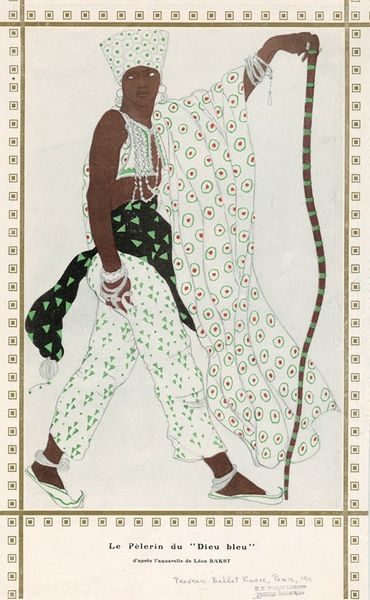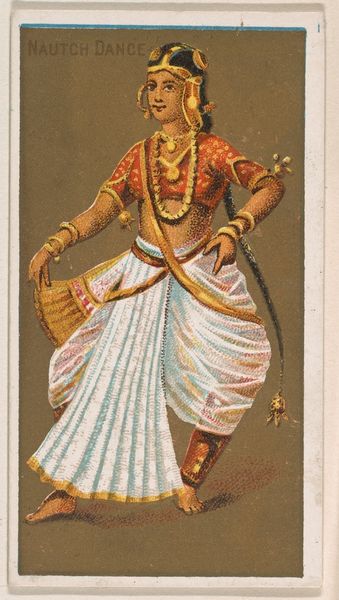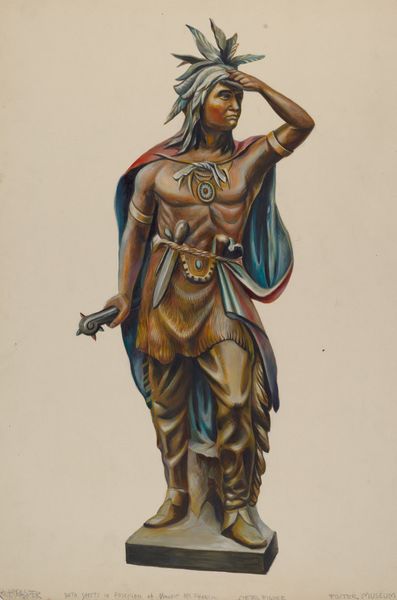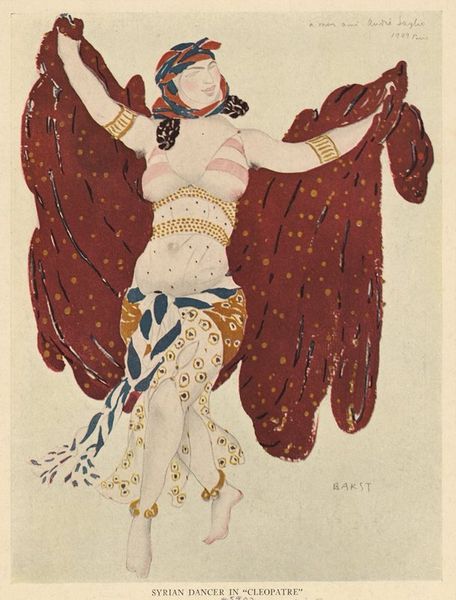
watercolor
#
asian-art
#
figuration
#
watercolor
#
naive art
#
costume
#
russian-avant-garde
#
watercolour illustration
Copyright: Public domain
Editor: Here we have Ivan Bilibin's "Costume design for the Opera 'Prince Igor' by Alexander Borodin," created in 1930, using watercolor. The costume feels incredibly vibrant and stylized, yet it’s hard for me to put my finger on the cultural influences shaping the design. What strikes you about this work? Curator: Well, looking at it through the lens of cultural representation, especially from the Russian Avant-Garde period, we can ask some vital questions: Who does this costume design represent, and how accurately? Bilibin was engaging with orientalism, the West's fascination with and often misrepresentation of Eastern cultures. Note the "Polovtsian Dances" connection; consider how the opera itself may have exoticized the Polovtsians. How does the vibrant colour and ornate design play into preconceived notions of Central Asian cultures at that time? Editor: So you're suggesting it's less about a faithful portrayal and more about projecting a certain image? Curator: Exactly. We should explore the power dynamics at play. Russia had a complex relationship with its bordering Eastern cultures. The opera could be interpreted as either celebrating or appropriating non-Russian culture. Where do you see the tension arising in the design itself, where is it performative? Editor: I guess the emphasis on very ornate, almost stereotypical designs around the waist and headdress speak to a projection of power. The exaggerated tassles, jewels. And of course the bright red. It certainly does not read like functional clothing. Curator: Precisely! So by understanding its historical context, we see beyond the pretty colors and appreciate the artwork as a commentary on cultural exchange. Editor: I hadn’t considered those issues of representation, I now see there are a whole matrix of colonial ideas imbued in the art. Curator: Absolutely, this artwork is a window to understanding how power and culture intersect. Let's continue questioning who gets to tell which story.
Comments
No comments
Be the first to comment and join the conversation on the ultimate creative platform.

